December 9, 2021
IGrain’s Rahul Chauhan provides information on pricing and current inventories, as well as import figures and news from domestic and international markets.


Market down due to lack of demand
Delhi
Due to continued arrival of mung in the mandis of Rajasthan and the slow sales of mung dal, a lack of demand was seen last weekend and prices remained stable at Rs 6500/7000 per quintal.
Maharashtra
Arrival of mung in the main mandis of Maharashtra has started decreasing. Even after low arrivals, the market fell due to weak demand. Barshi prices fell by Rs. 200 and Ahmednagar by Rs 100 per quintal to Rs. 4,100/6,100 and Rs. 5,200/7,200 per quintal, respectively. In Latur and Akola, market prices remained stable at Rs 4000/7300 per quintal and Rs 6700/7600 per quintal, respectively.
Karnataka
Due to weak demand, Karnataka prices showed a declining trend in last week. Bidar prices fell by Rs. 300 and traded at Rs. 6,000/6,500, Gadag by Rs. 200, selling at Rs. 5,777/6,813 and Hubli by Rs. 100 to Rs 6039/6509 per quintal.
Rajasthan
Rajasthan prices registered bearish movement due to increased selling and weak demand from mills. In Jaipur, prices fell by Rs. 100, in Nagaur by Rs. 150, in Kekdi by Rs. 5,200/6,500 and in Sumerpur Rs. 300/400 per quintal. By the weekend Jaipur sold at Rs. 5,500/6,900, Sumerpur at Rs. 4,000/6,500, Nagaur at Rs. 3,700/6,350 and Kekdi at Rs. 5,200/6,500 rupees per quintal.
Madhya Pradesh
Weakness in demand was also seen in MP. Harda prices fell by Rs 100 per quintal and traded at Rs. 4,000/6,900 but, in Pipariya, market prices were stable at Rs. 4500/6700 per quintal.
Other markets
Lalitpur prices recorded an improvement of Rs. 100 per quintal, trading at Rs. 5,000/6,800. Gujarat prices did not see any increase and Dahod prices remained the same at Rs. 6,000/6,500. Equally, Rajkot remained stable at Rs. 5,000/7,300 and Junagadh at Rs. 6,500/7,500 per quintal.
Mung Dal
Demand in mung dal was weak and due to this there was no big changes in prices, which remained stable at Rs. 8,400/9,000 per quintal all over the weekend.
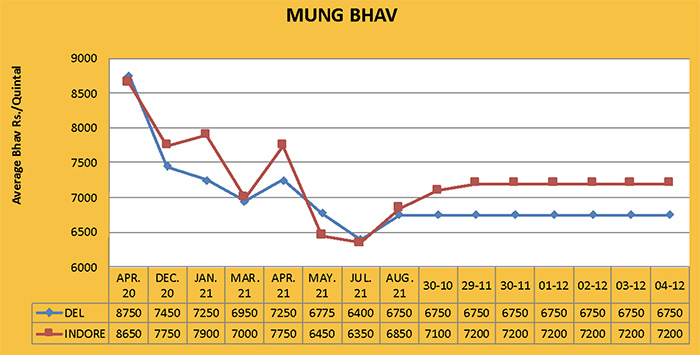
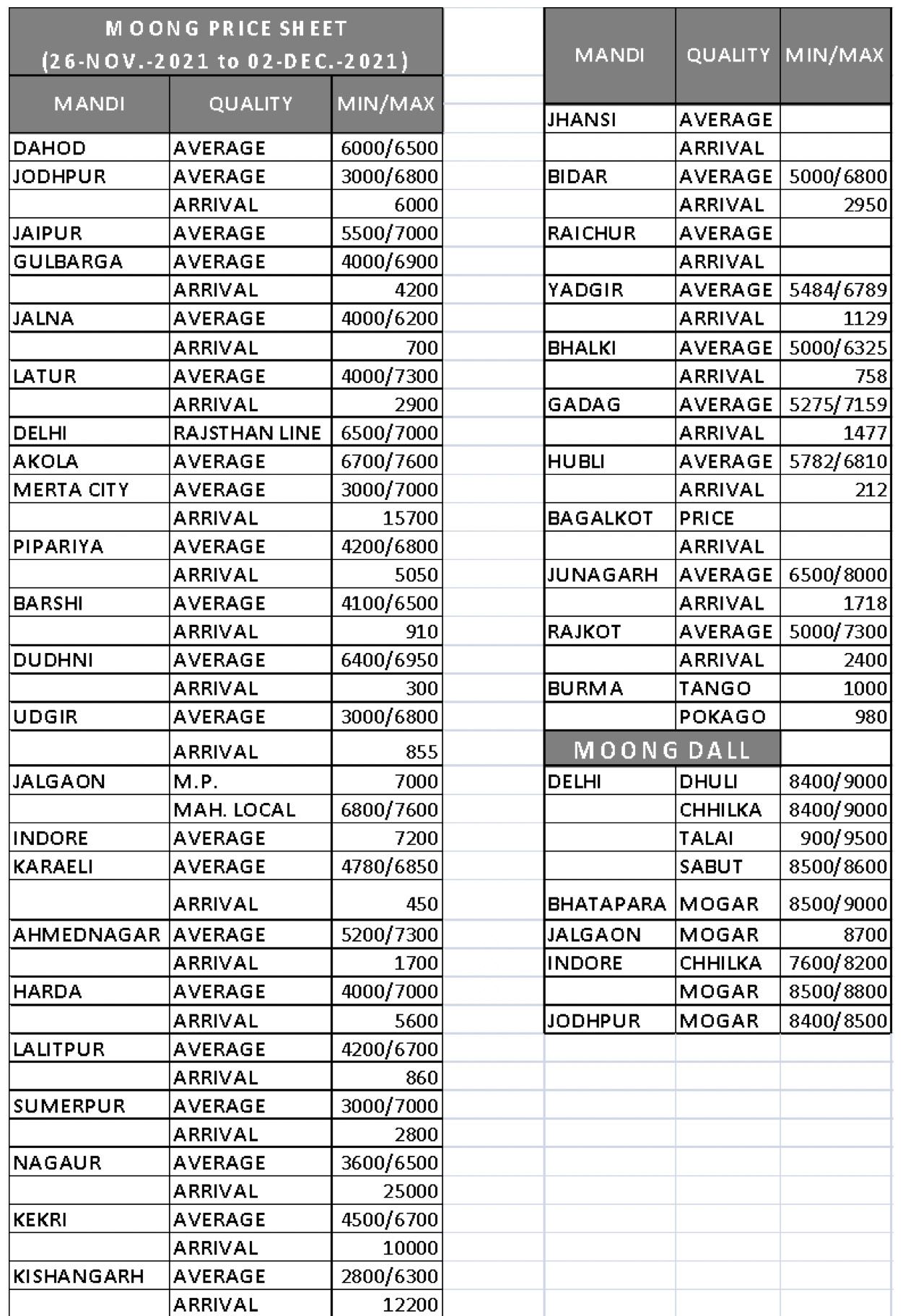
(November 29, 2021)
Sowing of Rabi crops affected due to waterlogging in the fields in many districts of Bihar
Patna. Due to continued heavy rains during and after the monsoon season, the low-lying areas of many districts are still seeing waterlogged fields or swamp-like conditions and farmers are finding it difficult to sow Rabi crops due to excess moisture content. It is worth noting that almost half of the sowing season of Rabi crops has passed, however sowing has not yet started in many areas. Even by installing a pump, it is not possible for farmers to take water out of the fields because they have no means of draining it. With the fall in temperature, the rate of drying has also slowed. As a result, farmers are becoming increasingly frustrated and are worried that it will be impossible to sow their crops, seriously affecting their livelihoods. In the Rabi season, along with wheat, Bihar also cultivates pulses-oilseed crops, including lentils and linseed, and is among the leading provinces of the country in maize production. The period from November 15 to December 15 is considered the ideal time for wheat cultivation in Bihar, whereas farmers prefer to complete the sowing of wheat by November 30. There are many areas where it will take months for the water to dry up from the fields. In the Mahua block of the Hajipur district, about 40 percent of the fields contain stagnant water, making it difficult to cultivate any crops. Farmers are looking to the government in the hope that it will provide some relief. Bihar has also had to face cyclonic storms twice this year. In areas where there is no waterlogging, farmers are sowing wheat and other rabi crops early.
(November 30, 2021)
Sowing of Rabi crops in Gujarat is far behind from last year
Ahmedabad. In Gujarat, the production area of rabi crops was 25.17 lakh hectares as of November 29, much less than the 26.91 lakh hectares in the same period last year and 65 percent of the normal average area of 38.69 lakh hectares. According to the weekly report of the State Agriculture Department, compared to last year, the wheat production area in Gujarat has decreased from 6.31 lakh hectares to 4.26 lakh hectares, while the area of jowar has grown from 9 thousand hectares to 10 thousand hectares and the sown area of maize increased from 48 thousand hectares to 50 thousand hectares. The total area of cereal crops, however, fell from 6.95 lakh hectares to 4.89 lakh hectares.
The total sown area of pulses jumped from 5.80 lakh hectares last year to 6.90 lakh hectares in 2021, comprising 6.51 lakh hectares of gram, up from 5.33 lakh hectares. Other pulses, however, fell from 46 thousand hectares to 39 thousand hectares. The sown area of oilseed crops also increased from 1.98 lakh hectares to 2.99 lakh hectares, a large portion of which is mustard seed; the acreage of other oilseeds is negligible. In Gujarat, the pace of sowing of Rabi crops is gradually accelerating, with all three main crops - wheat, gram and mustard - progressing well, as compared to last year. Nonetheless, there is a huge decline in the area of spice crops, especially cumin of which only around 40% of the usual average area of 4.35 lakh hectares has been sown.
(November 30, 2021)
GST will be levied on laboratory testing fee of food items from December 1
New Delhi. In a circular issued by the Food Safety and Standards Authority of India (FSSAI), an autonomous body, it has been revealed that Goods and Services Tax will not be charged on the testing fee on food sent for testing in laboratories. This GST rate will be determined as per the order of the Central Government. This duty will be applicable on all domestic and imported food items at the same rate.
(December 3, 2021)
Farmers will get relief due to increase in support price of six Rabi crops
New Delhi. The Union Minister of Agriculture and Farmers Welfare has said that on the basis of the recommendations by the Commission for Agricultural Costs and Prices and comments by the State Governments and Central Ministries, the Government has approved 6 crops - wheat, barley, gram, masoor, mustard and safflower - for the Rabi season of 2021-22.
The minimum support price wheat for the 2021-22 season has been increased to Rs. 2,015 per quintal, barley to Rs. 1,635 per quintal, gram to Rs. 5,230 per quintal, lentil to Rs. 5,500 per quintal and mustard to Rs. 5,050 per quintal.
The support price of safflower has been fixed at Rs. 5,441 per quintal.
In a survey by NITI Aayog about the effect of Minimum Support Price on farmers, it was revealed that 78 percent of farmers are incentivised by the MSP to increase the crop production and improve farming practices. It showed that farmers are focusing more on the use of high-yielding seeds, organic manures, chemical fertilizers and insecticidal chemicals and are also trying to improve the sowing and harvesting methods of the crop. Due to this, food grain wastage has been curbed to some extent.
Meanwhile, vigorous cultivation of Rabi crops is going on across the country. If seen from the point of view of fixed targets and general average areas, good progress has been made so far. The production areas of wheat, pulses and oilseeds are up from last year but the sowing of coarse cereals is lagging behind. Farmers are paying more attention to the cultivation of gram in pulses and mustard in oilseeds whereas, contrary to expectations, there has been some decrease in the sown area of lentils, despite the minimum support price having increased by Rs 400 per quintal and the market price being very high.
(December 4, 2021)
Rabi crop area increased to 438.51 lakh hectares
New Delhi. Due to favourable weather conditions, Indian farmers are showing a lot of interest in the cultivation of Rabi crops, due to which the total production area had increased to 438.51 lakh hectares by 3 December 2021, 25.40 lakh hectares more than last year.
The general average cropped area for the current Rabi season has been estimated at 625.14 lakh hectares.
According to the latest data from the Union Agriculture Ministry, the area of wheat has jumped from 193.42 lakh hectares to 200.66 lakh hectares, paddy area from 9.38 lakh hectares to 9.74 lakh hectares. The total pulses area during the current Rabi season is 113.48 lakh hectares compared to 113.98 lakh hectares last year. The area of oilseeds improved from 64.73 lakh hectares to 83.65 lakh hectares while the sown area of coarse cereals declined to 30.49 lakh hectares from 32.11 lakh hectares.
Among pulses, the area of gram increased from 80.01 lakh hectares to 81.43 lakh hectares, the sown area of lentils increased from 12.48 lakh hectares to 13.03 lakh hectares and likewise, the sown area of khesari improved from 2.35 lakh hectares to 2.70 lakh hectares. The pea production area, however, declined to 8.05 lakh hectares and urad slipped from 3.50 lakh hectares to 3.22 lakh hectares while moong also declined from 85,000 hectares to 64,000 hectares. There has been a significant decline in the sowing of other pulses.
As far as oilseed crops are concerned, the area of mustard-rapeseed has jumped from 59.57 lakh hectares last year to 77.62 lakh hectares this year, which is much higher than the normal average area of 61.55 lakh hectares. Elsewhere, the sown area of groundnut increased from 2.15 lakh hectares to 2.70 lakh hectares, sunflower sowing increased from 56,000 hectares to 75,000 hectares, safflower area went from 42,000 hectares to 59,000 hectares and some other oilseed areas improved from 17,000 hectares to 20,000 hectares. On the other hand, the sown area of sesame slipped from 18,000 hectares to 15,000 hectares and linseed also fell from 1.67 lakh hectares to 1.62 lakh hectares. The cultivation of coarse cereals is also lagging behind: the jowar area declined from 20.91 lakh hectares to 18.95 lakh hectares, maize fell from 6.33 lakh hectares to 6.17 lakh hectares and the ragi area slipped from 33,000 hectares to 28,000 hectares. Barley, however, had an increase in sowing area from last year, up from 4.46 lakh hectares to 4.96 lakh hectares.
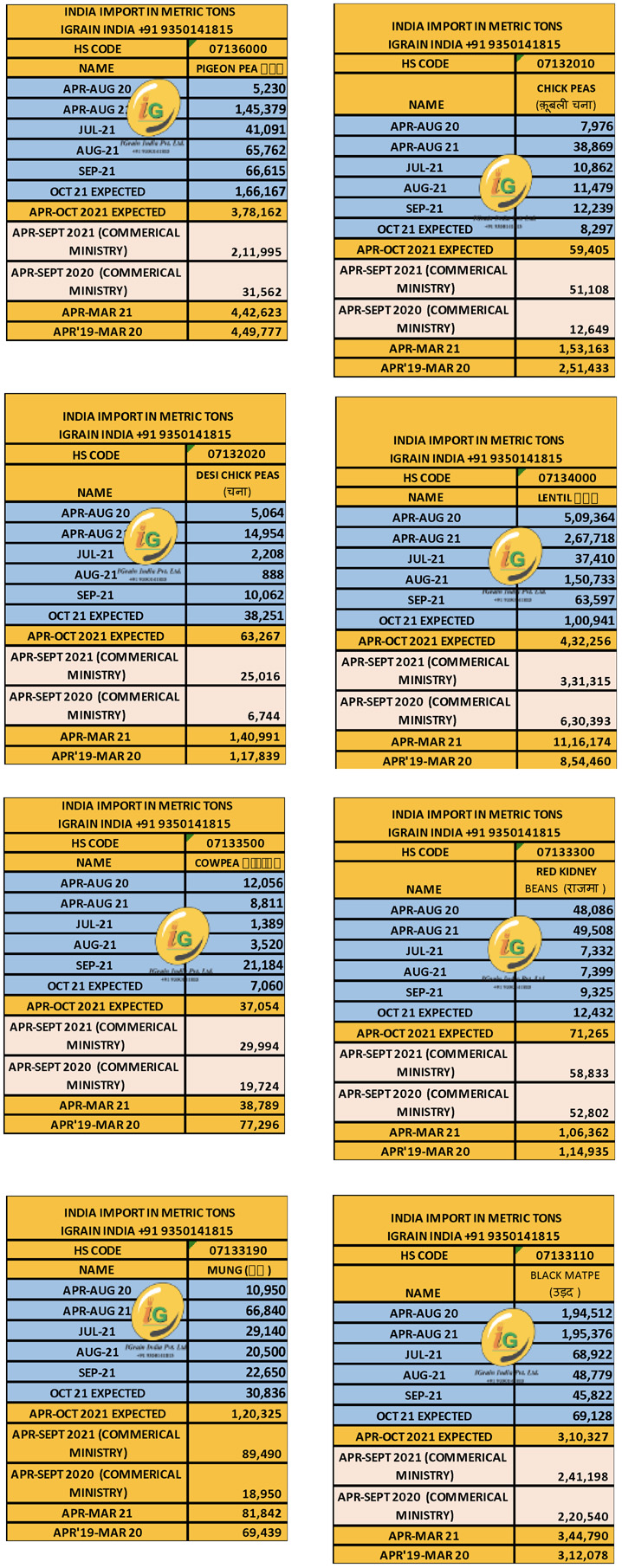

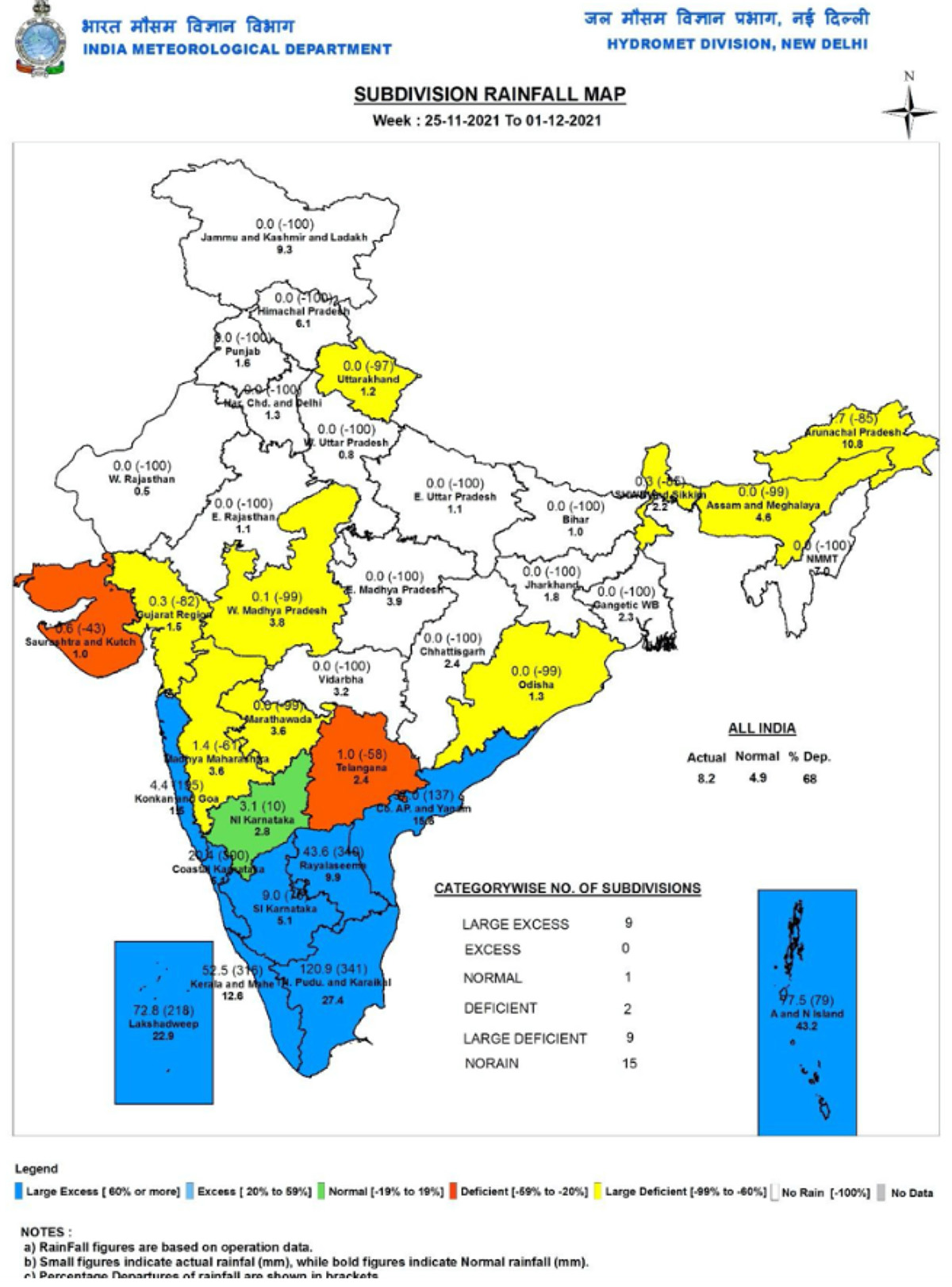
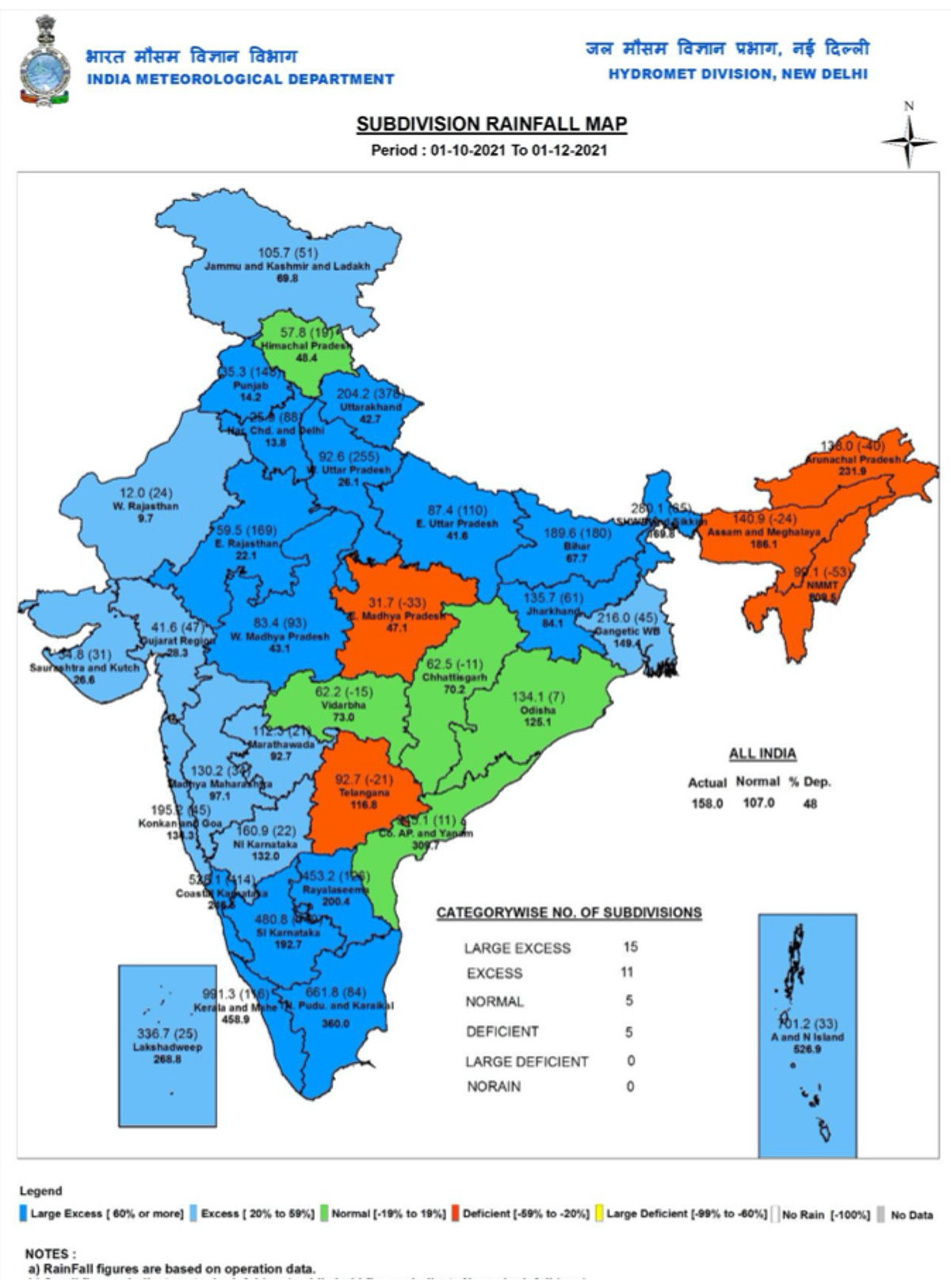
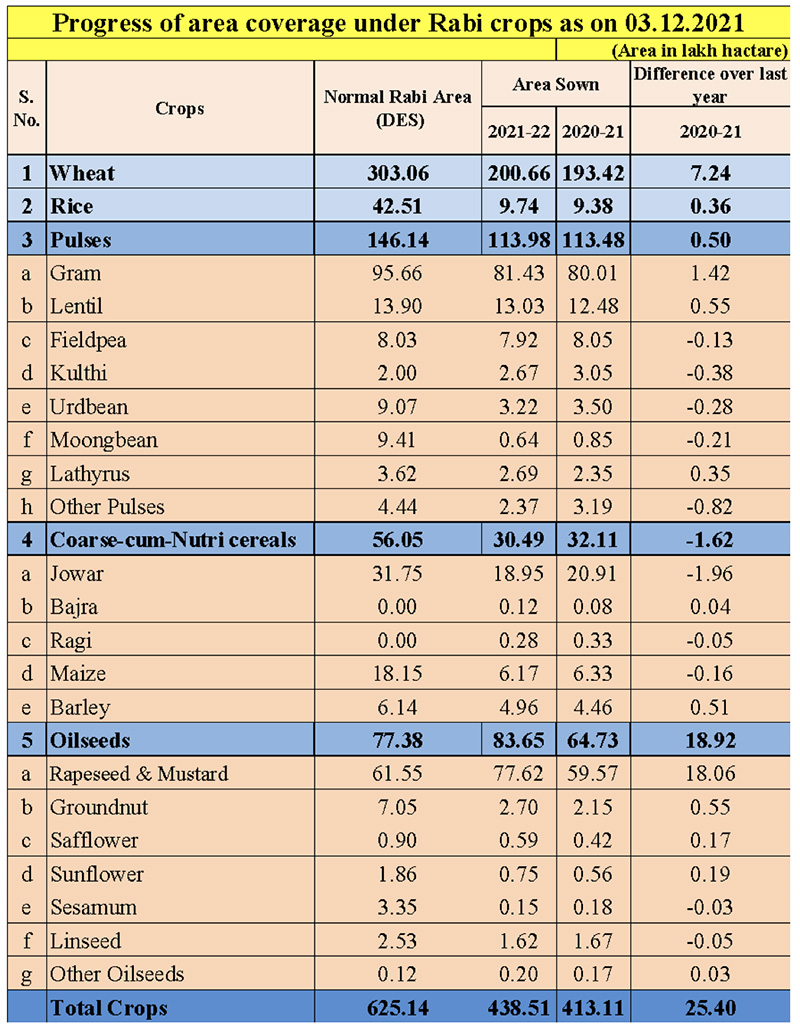


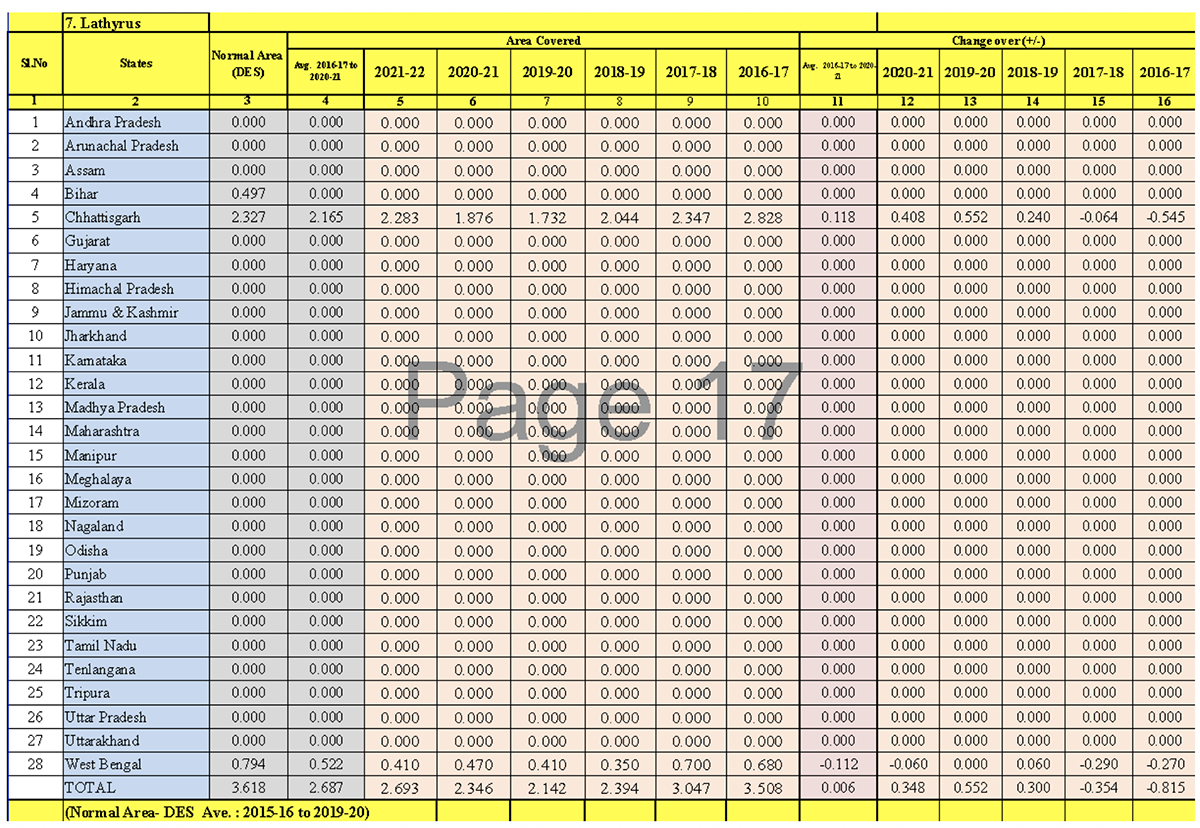





Abbreviations
Tuar/ Arhar: Pigeon Peas PP
Mung: Green Mung
Urad: Black Matpe
Chana: Gram, Desi Chickpea
Matar: Pea
Masur: Lentil
Besan: Gram Flour
Mandi: Market yard
Bhav: Prices
Dal/Daal: Processed Pulses (Directly for human consumption)
Rs: Indian Rupees (1$=Rs 75.41)
Rahul Chauhan
Director, IGrain India
igrainind@gmail.com
+91 9350141815
Twitter igrain_india

IGrain / Rahul Chauhan / India / Delhi / New Delhi / Maharashtra / Karnataka / Rajasthan / Madhya Pradesh / Mung Dal / Mung / Chick Peas / Desi Chick Peas / Black Matpe / Red Kidney Beans / Cowpea / Lentil / Pigeoon Pea
Disclaimer: The opinions or views expressed in this publication are those of the authors or quoted persons. They do not purport to reflect the opinions or views of the Global Pulse Confederation or its members.